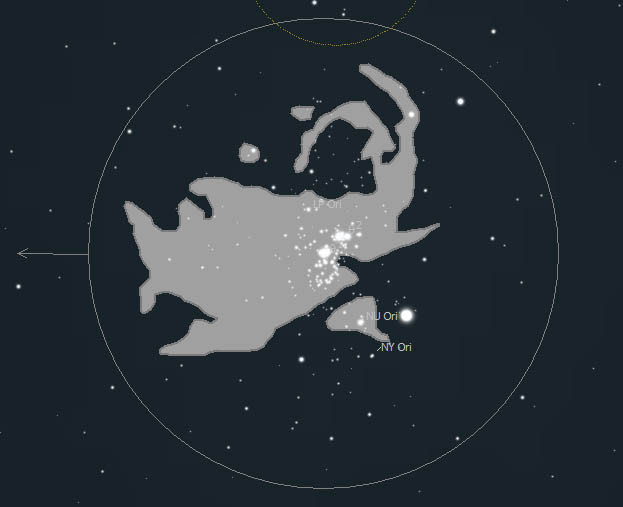|
The
famous trapezium lies buried deep within the Orion Nebula. It is
primarily made up of four bright stars, but is also generally
considered to include several fainter stars in the vicinity. This
object would be striking anywhere in the sky, but is particularly
appealing (not to mention easy to find) within the famous M42
nebulosity.
The stars of the
Trapezium make up the Theta1
Ori system, with Theta1
Ori as the primary. The four brightest components (A, B, C, and D)
are traditionally lettered in RA order instead of the magnitude
order used for other multiple stars. These
four brightest members are visible in even the smallest telescope
using high magnification.
The primary star,
6.7-magnitude Theta1
Ori, is also the variable star V1016 Ori, an Algol-type eclipsing
binary system that becomes fainter by about a magnitude when the
smaller, brighter star passes in front of the larger, cooler one.
These stars are so close together that no telescope can split them
apart. Eclipses occur every 65 days.
Star B is also an
eclipsing binary, known as BM Ori. It undergoes a primary eclipse
every 6.5 days, dimming by 0.76 magnitudes.
Star C is HD 37022, a
5.1 magnitude star suspected of small variability.
Star D is HD 37023, a
6.7 magnitude star also suspected of small variability.
Stars
E and F should be visible in a 6-inch scope under good conditions.
Stars G and H are quite difficult, typically requiring large
aperture and good seeing. 
Diagram
of the system, north is down and east is to the right.

The view in six inch at 50x.
North is down and east is to the right. |